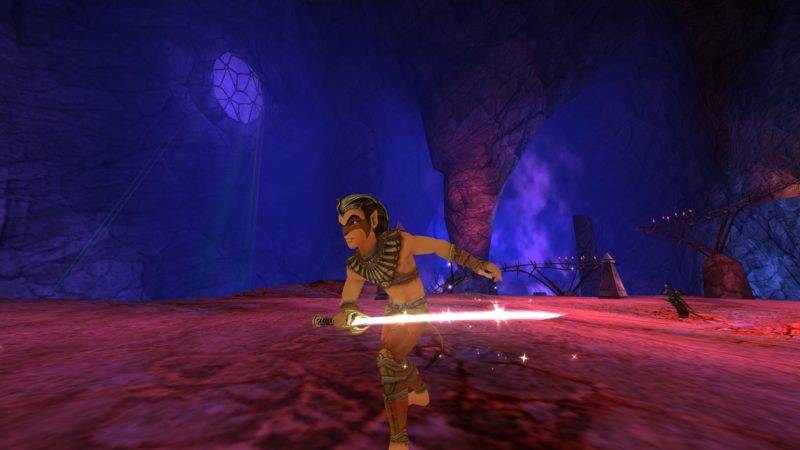
Genres are a good way to discriminate when deciding what games might be enjoyable to you. If you told me Sphinx and the Cursed Mummy by THQ Nordic was a Metroidvania with a hint of puzzle solving, I’d probably be intrigued. After having played the game (but not to completion, because after 3 hours, I couldn’t stand the game anymore) I would say this game takes the worst possible aspects of the genre it represents. It is the perfect example of what not to do when designing a game. Storywise, this game centers around a demigod named Sphinx, who for some reason, has no powers whatsoever at the outset and the historical King Tutankhamun, who is turned into a mummy by the hands of your classic stereotypical villain who lusts for power. Together, they have to work together to bring Tut back to life and to take back the kingdom. While backtracking is a key element of many similar games in the genre, this game sucks all the fun out of it. There’s no charm or achievement to exploring and finding out the cool new places you’ve unlocked. It’s a rigid instruction manual. The whole game feels like one of those annoying errand running side quests that you do just to pick up an extra item.

To illustrate my point, I’ll outline a part of the game that really got to me. Right after you arrive at Abydos, there’s barely anything to do. Despite there being ziplines everywhere, a common landmark used across games for fast transport, they currently do nothing until later in the game. The only thing you can do is the thing you have to do, which is clearly a trend in this game. A random NPC you talk to asks you to collect some pearls for him. Having nothing else to do, I begrudgingly climbed around and smashed pots, almost convinced I was on a wild goose chase if not for the fact it was the only promising point of progress. After giving him the pearls, he gives me the key to access the rest of the city. This made no sense to me; is everyone else just stuck where they are? And now that he doesn’t have it, how will he get home?
Related to this, close to where I quit the game, I arrived at a new location called Heliopolis. I got there by boat, and even at the outset, the boat captain says “I don’t know why anyone would visit this wasteland. In fact, I’m leaving right now.” Coupling this with the fact that just a moment earlier he had said he was already heading to Heliopolis, it’s clear the story exists just for the sake of the player to complete it. I’m not part of some larger world that exists on its own; every interaction is just another deus ex machina. It’s frustrating when a story doesn’t feel real, and especially so given that King Tut (the titular Cursed Mummy) was a real person. All of this should feasibly have occurred without having been made into a game, but yet everything that happens feels forced. It’s almost like the entire game was forced into being out of sheer willpower and without passion whatsoever.

My best way of describing Sphinx and the Cursed Mummy is the gameplay is all filler for itself. If you’re looking for engaging gameplay or an engaging storyline, don’t play this game. In fact, I don’t really know why anyone would play this game. My hunch is that someone decided to revive it solely for the nostalgia factor without actually going through and seeing if it has stood the test of time. I personally have gone back and played a bunch of games from my childhood and realized how poorly they’re made, but I loved them as a kid for whatever reason. The difference is that kids nowadays have much better games to choose from. Your money is definitely better spent literally anywhere else.
Take a Look at the Sphinx and the Cursed Mummy Trailer:
Sphinx and the Cursed Mummy is available for Nintendo Switch.
I am an aspiring game designer looking to explore the philosophy behind game creation. Some of my favorite games include Overwatch, Super Smash Bros, Portal, and Beat Saber.





More Stories
ReStory Preview for Steam
Firefighting Simulator: Ignite Releases Parker’s Story DLC for PC and Console
The Game Awards 2025: Star Wars: Fate of the Old Republic Revealed by Arcanaut Studios and Casey Hudson, Director of KOTOR and Mass Effect